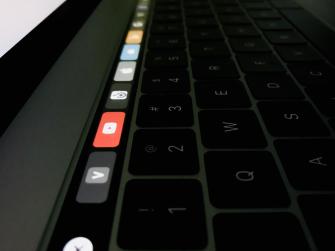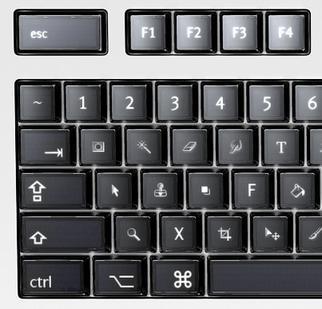
Up until a year ago, I had a Macbook Pro with a Touchpad. I honestly never used it other than for adjusting sound volume and screen brightness. Oh, and the very annoyingly placed escape pseudo-button. The promise of a dynamic surface that changed based on app and context, while great in concept, was lost on me. Maybe I’m old-fashioned, but I like actual buttons. I’m much happier having my function keys back. Yet, they still only serve a single purpose. Is there a way to make my keyboard more dynamic?

Lebedev Studio thought so, creating the Optimus Maximus keyboard. Released in 2007, the Optimus placed a small screen under every key on a traditional keyboard. That way you could know what each key did in your current application, instead of having to remember that, for example, the C key switched to the crop in Photoshop. The Optimus never took off, though, probably because of its prohibitive expense. And it wouldn’t have worked well for me because I prefer my laptop’s built-in keyboard.
Fast forward to 2017 with the release of Elgato’s Stream Deck, a bank of 15 programmable keys, each over a small screen. It’s an intriguing device made with live streamers in mind. It caught my eye when it first came out, but it was too expensive for me to consider for something that I might find a use for. Over the next several years, more editions and revisions came out, and the used price dropped to less than half the retail price. By this time, users and app developers had found other creative uses for the device outside of live streaming. There are now plugins for Zoom, Slack, Visual Studio Code, and many other applications that I use daily. Additionally, the device supports rather sophisticated macros, automation, and even scripting (through MacOS Shortcuts or AppleScript).

So last month I bought a used specimen with the hope that I’d find a practical use for it. So far, it seems worth it. I’ve integrated it into several areas of my daily computer use. Here’s a photo of my current setup. In the upper left, there is a system-wide media start/stop button. Yes, this duplicates the one on my Macbook keyboard, but I find it easier to locate. Below that is a Zoom “folder” with actions to mute/unmute, turn the camera on/off, share the screen, and leave the meeting. The middle of the Stream Deck hosts many of the apps I switch to during the day. This saves me from having to find it in the MacOS dock or use command+tab to find them. On the right, I have buttons to start and stop Docker. Since it’s a battery hog, I often stop it when I’m not working on a project. The bottom row contains buttons to control my Slack availability (left) and to open my Gmail tabs (middle). The next page, not shown, contains controls for the Stream Deck screen brightness. Overall, I’m happy that I purchased one, and I hope to find more uses for it that will justify my purchase.
Need a fresh perspective on a tough project?
Let’s talk about how RDG can help.
